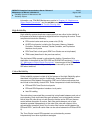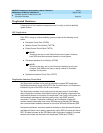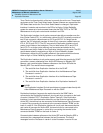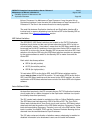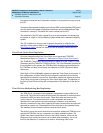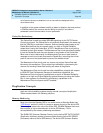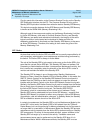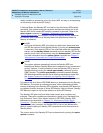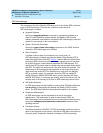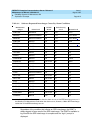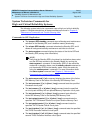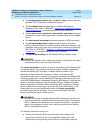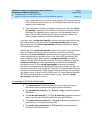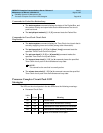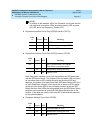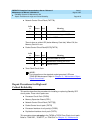
DEFINITY Enterprise Communications Server Release 6
Maintenance for R6vs/si
555-230-127
Issue 1
August 1997
Reliability Systems: A Maintenance Aid
Page 6-11Duplication Concepts
6
SPE-Interchanges
The process by which the Standby SPE takes over for the Active SPE is referred
to as an SPE-interchange. There are six conditions under which an
SPE-interchange is initiated:
■ Upgrade Software
Issuing the upgrade software command to upgrade the software on a
High or Critical Reliability system reboots the Standby SPE from the
standby translation card and then invokes an SPE-interchange so that the
system is now running on the new software.
■ System Technician Command
Issuing the reset system interchange command on the G3MT terminal
causes an SPE-interchange to be initiated.
■ Alarm Condition
If a Major or Minor alarm is activated on any circuit pack, an
SPE-interchange is initiated, provided the health of the Standby SPE is
better than that of the Active SPE. Table 6-1
lists the MOs, the alarm levels,
the level of SPE-interchange initiated, and the severity given to the alarm
for all MOs that can cause software requested SPE-interchanges. The
health of an SPE is based upon the single most severe alarm active within
that SPE. The higher the severity level, the more severe the problem. The
restart level of the interchange also depends on the single most severe
alarm within the active SPE. Hot Restarts occur only when the Standby
SPE is in standby mode. For example, the active SPE has a MAJOR
SHDW-CIR and a MINOR DATA-BD alarm, and the standby SPE has a
MAJOR TAPE alarm. In this case, the severity level of the active is 60, the
severity level of the standby is 65, and no SPE-interchange would occur.
■ SPE Select Switches
An SPE-interchange can be initiated by moving both SPE Select Switches,
one at a time, to the position that selects the Standby SPE for Active
Mode. The SPE Select Switches were described earlier in this chapter.
■ Scheduled Maintenance
An SPE-interchange can be requested as a part of scheduled
maintenance. This mechanism is used to exercise both SPEs. An
SPE-interchange can be requested as part of scheduled maintenance by
issuing the change system-parameters maintenance command and
updating the form.
■ Processor Insanity
Duplication Interface A (DUPINT, TN772) periodically audits the sanity of
each of the Processor circuit packs. If the Active SPE does not respond to
the sanity audit, Duplication Interface A initiates an SPE-interchange.



